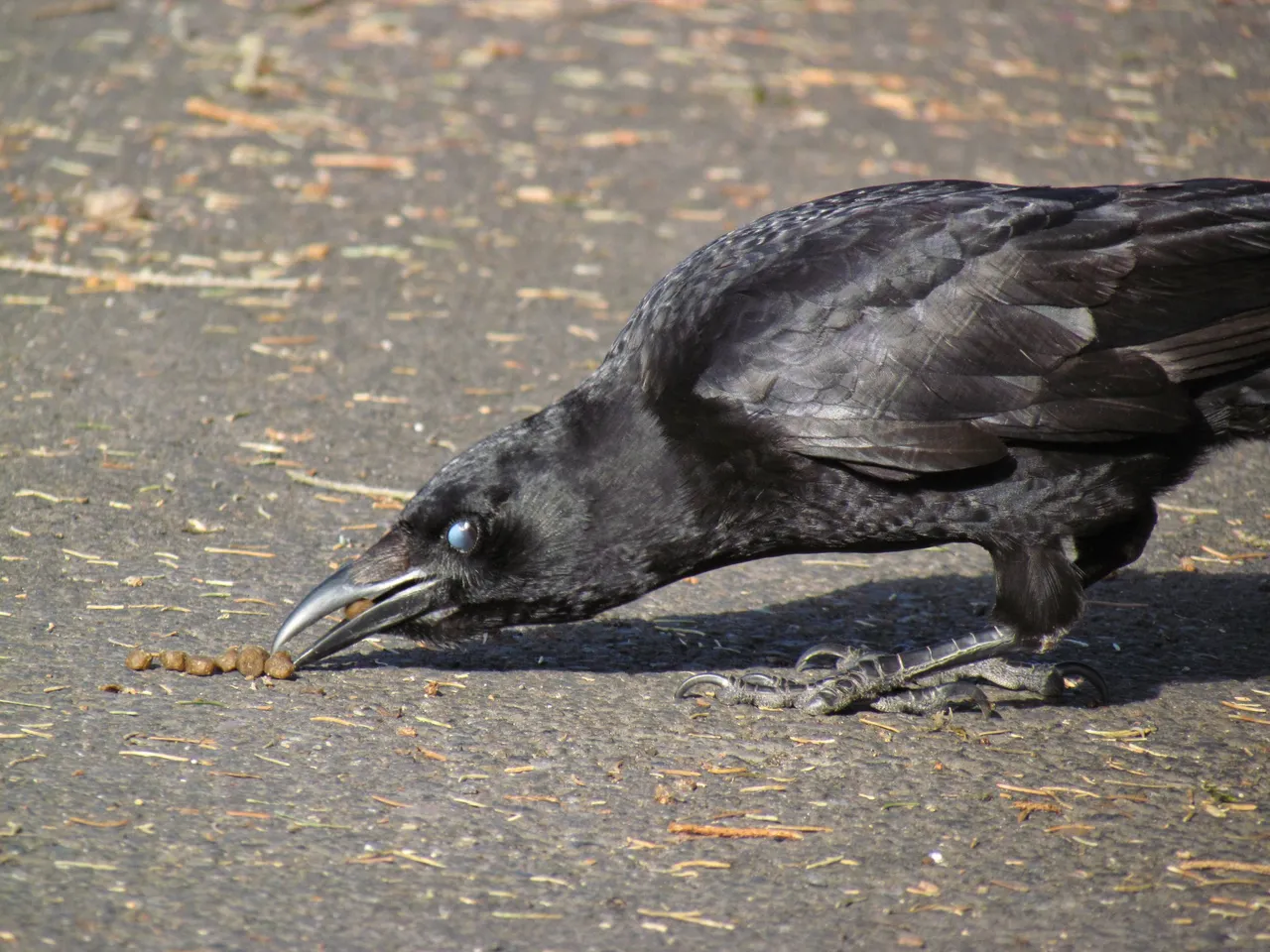
The nictitating membrane is a third eyelid present in all birds. It is also present in many other species of reptile, amphibian, fish, and even some mammals. This membrane closes laterally and is designed to protect and moisten the eye.
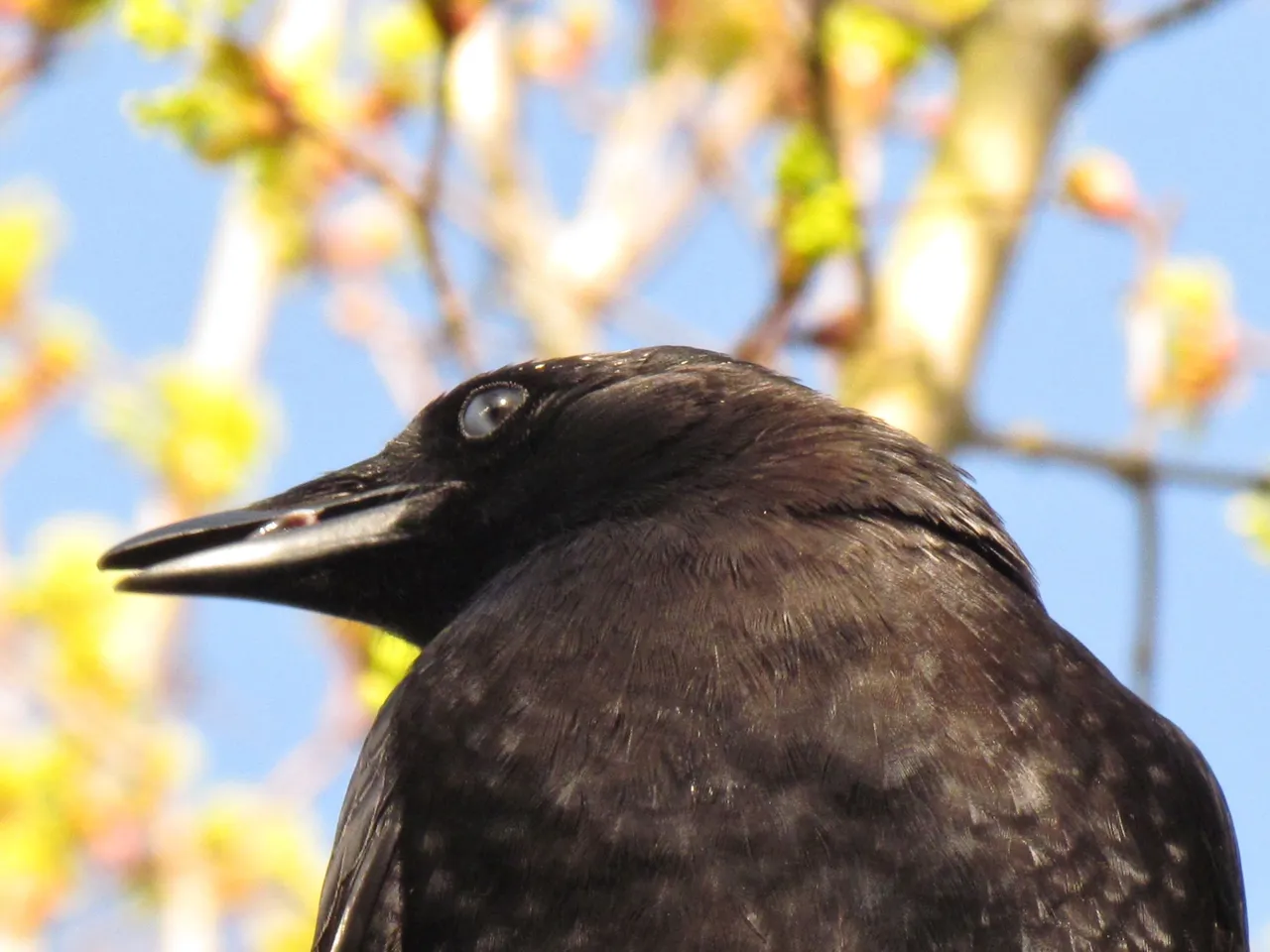
Below are some examples of how a crow's eye looks when it is covered by the membrane. These photos were taken on a hot day. The crows were open-mouthed, which I believe is a self-cooling technique, and were doing a lot of blinking to keep their eyes moist. They look like little crow zombies.
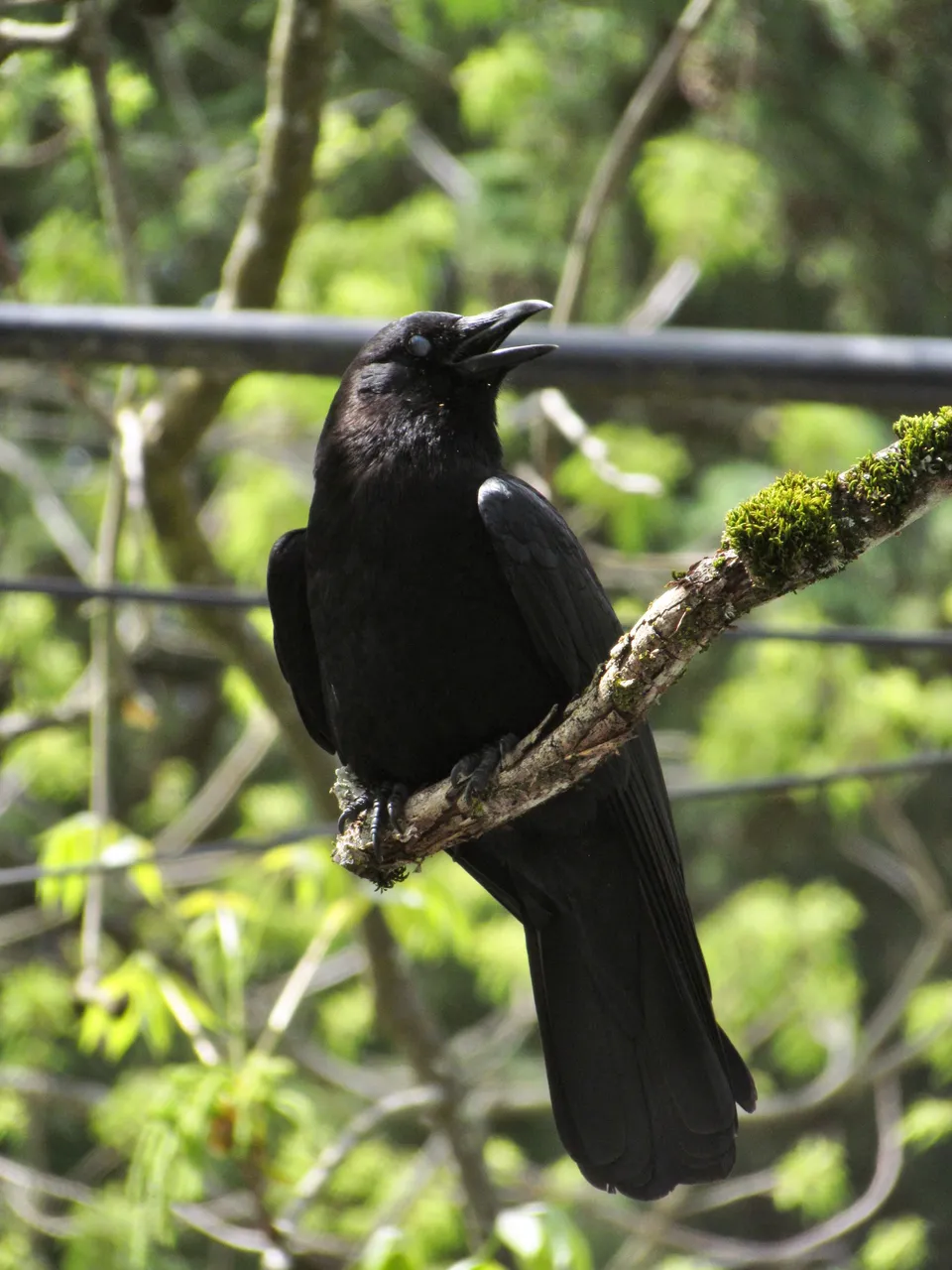
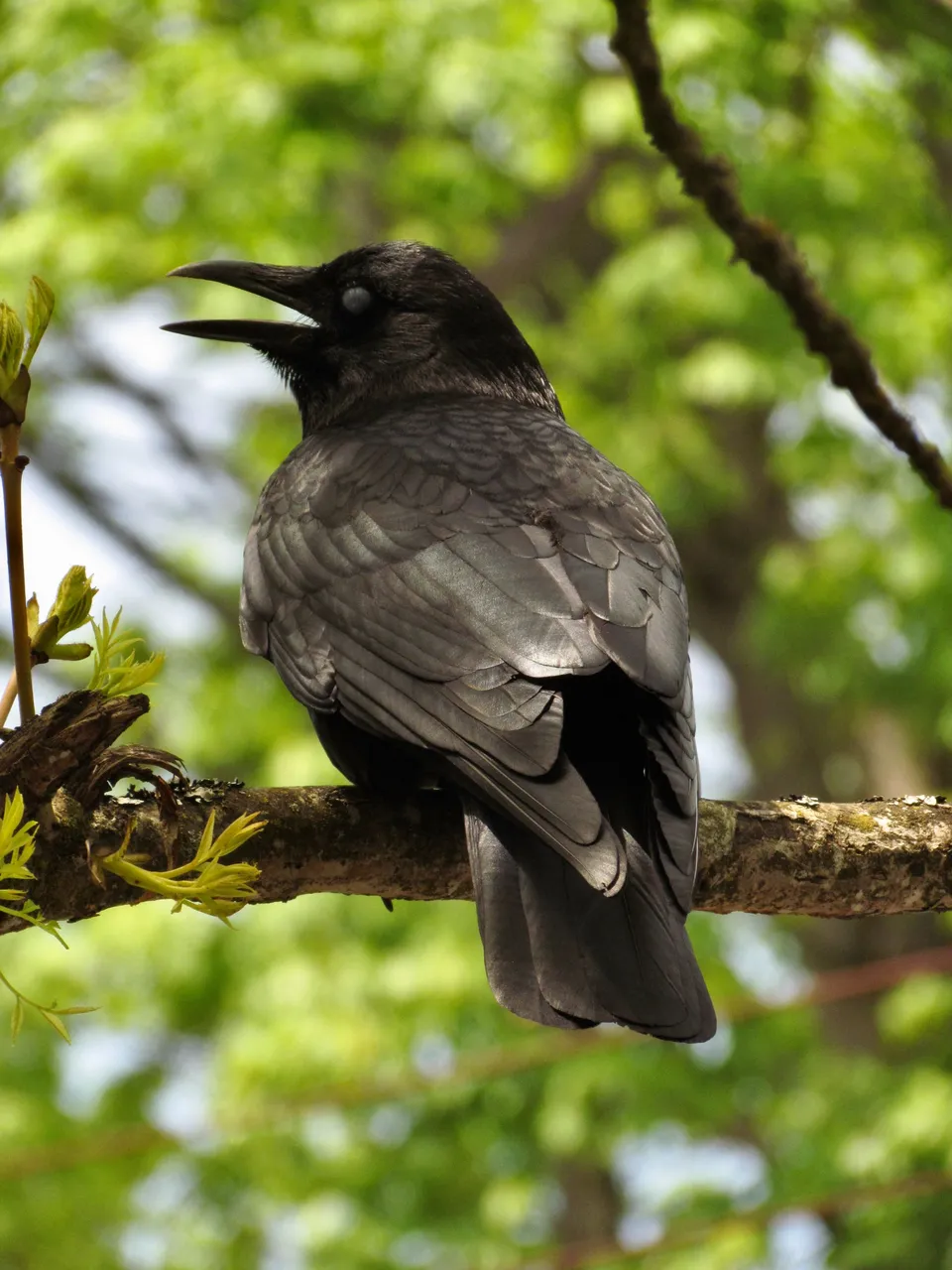
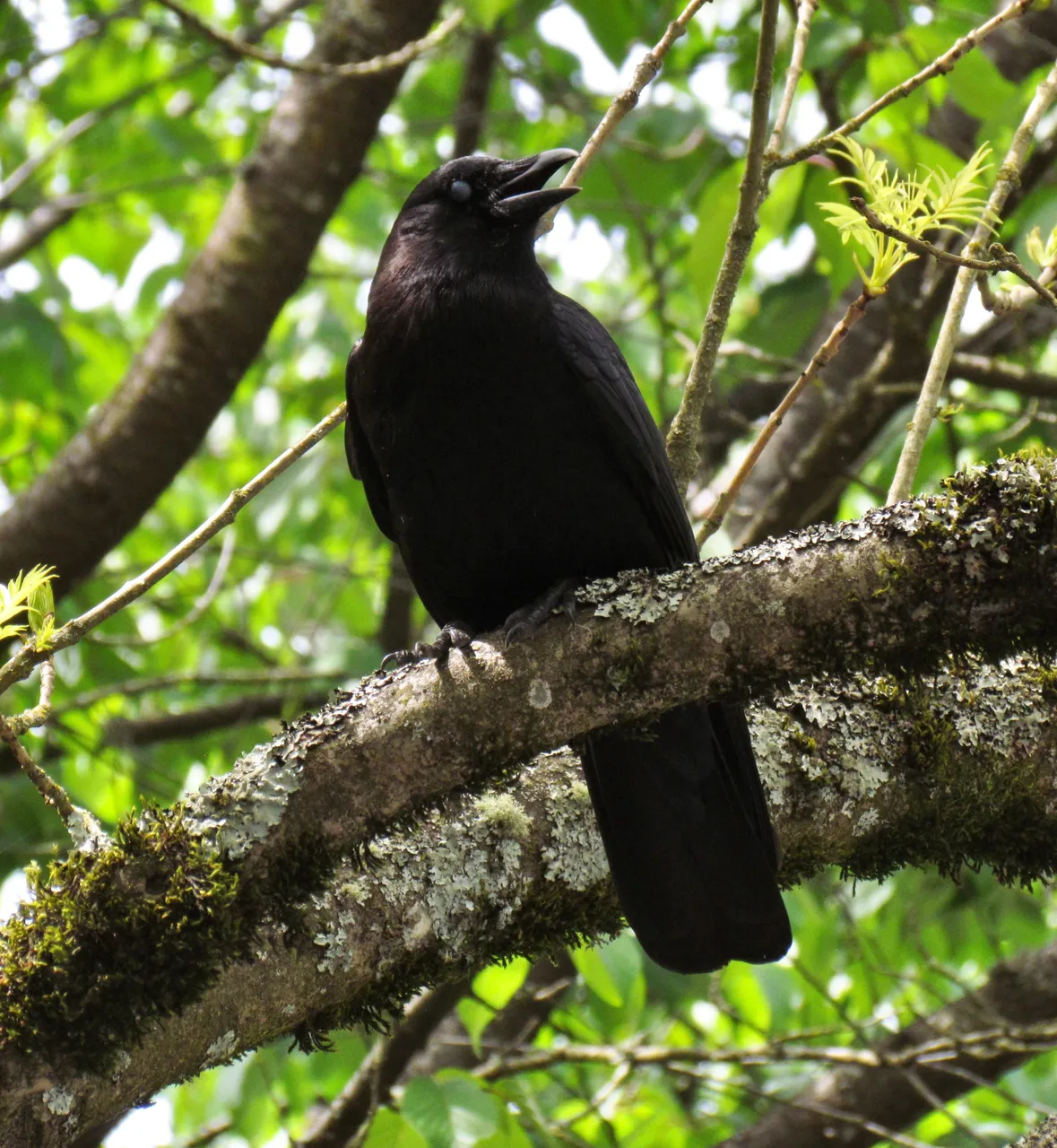
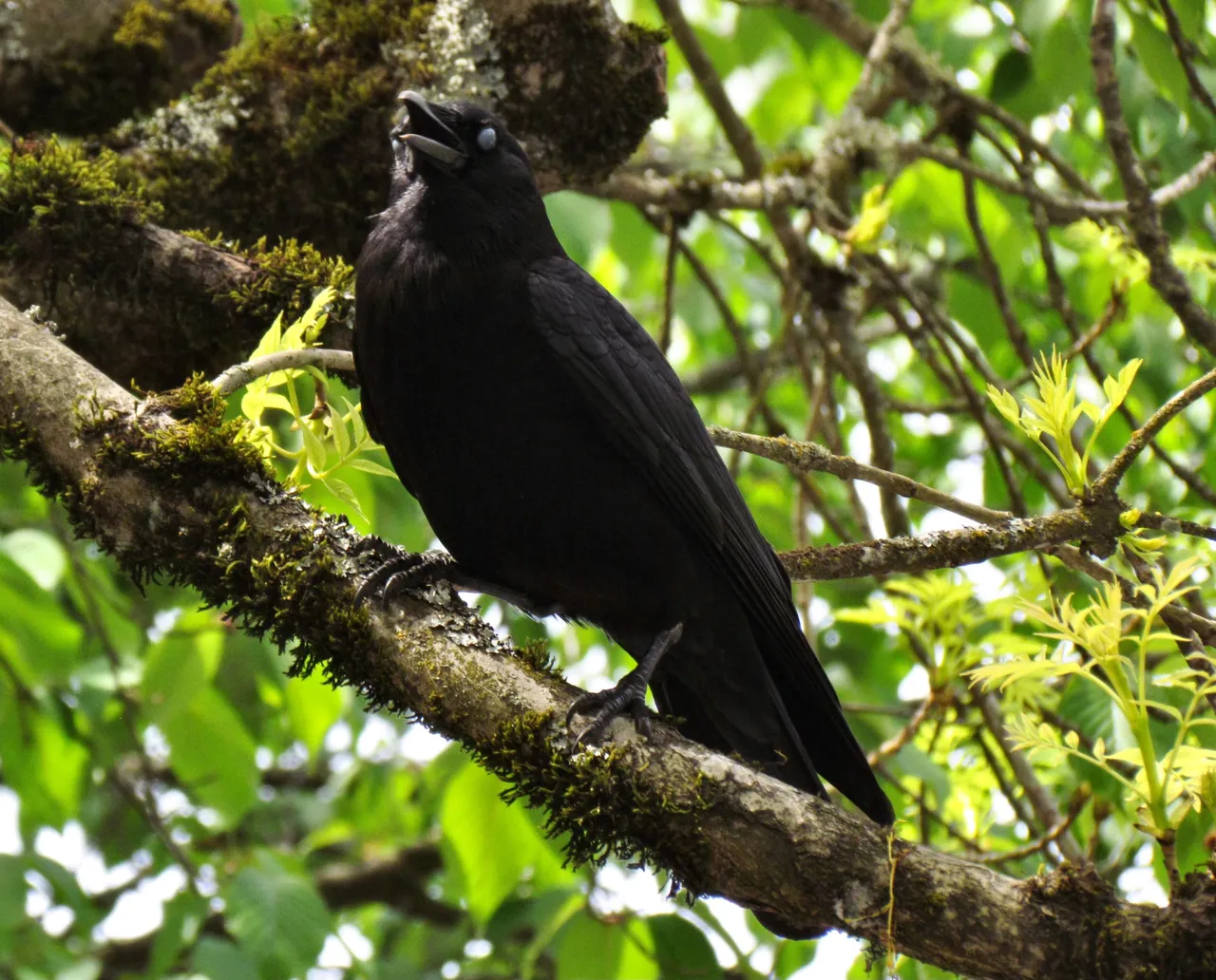
In addition to involuntarily blinking to moisten and clean their eyes, crows have voluntary control over this membrane, and use it as a form of communication.
For a couple weeks preceding Lorena laying eggs, I noticed she was grunting and making displays to get Bo's attention. I was lucky enough to capture one of these displays with my phone. It's a little hard to see, but she is blinking the membrane while she flutters and grunts. Bo is very interested.

I have read that frightened crows do not blink. Sometimes when a crow who is not used to me comes down to eat something I have laid out, they will stare, wide-eyed and unblinking at me and my dog, trying to assess the safety of the situation. A frightened crow will also crouch, ready to spring into the air. This is hard for me to capture in a photograph, because any movement I make will send the bird into flight, and my intent is to build trust and not frighten them. But this shot gives you the general idea of an unsure, unblinking stare. This crow has probably seen us around. They weren't frightened, just tentative.
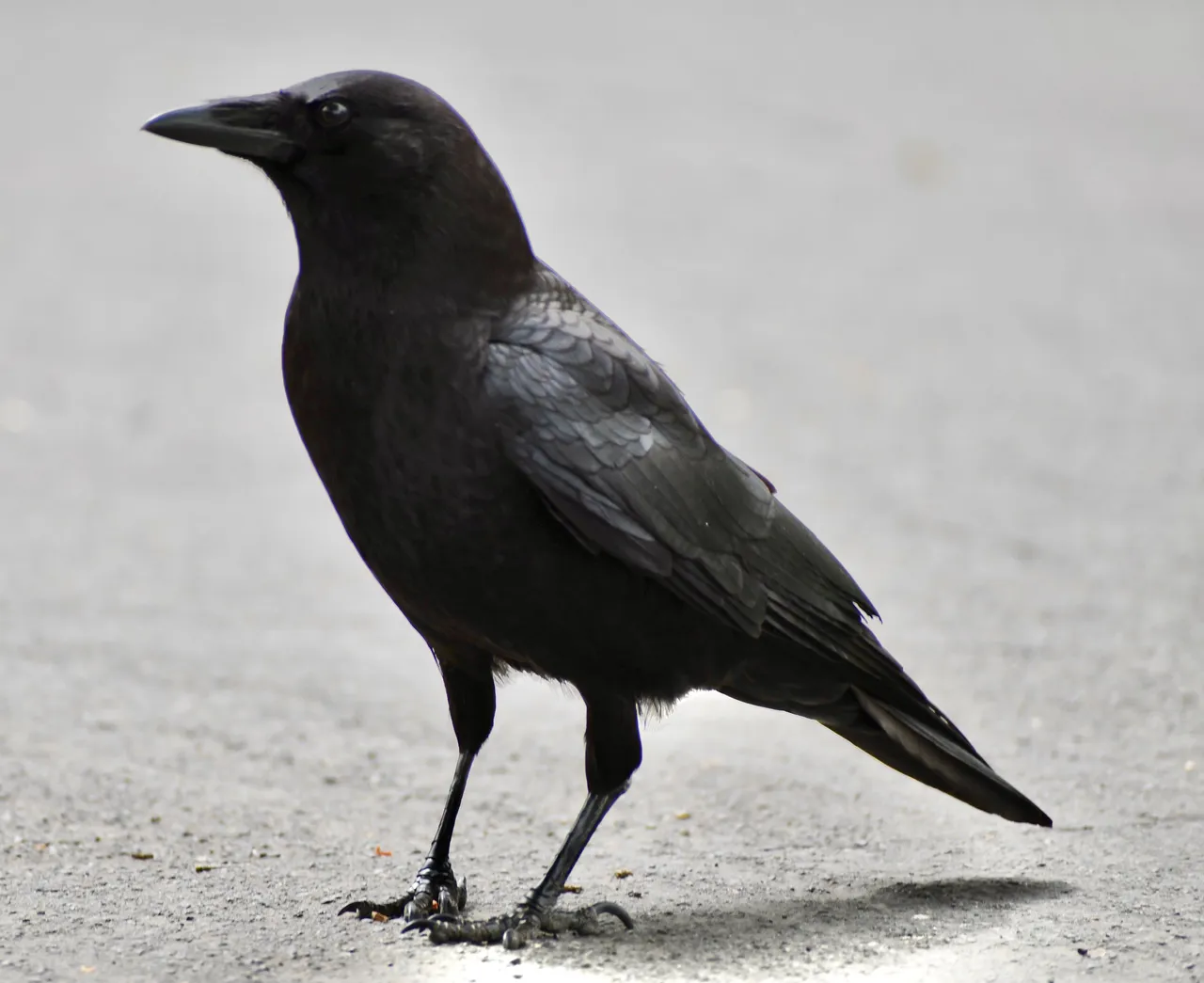
The nictitating membrane is also used by crows when making territorial displays. This crow here is attempting to make a claim to this part of a block where I had put down some food. The territory had been open for a while because crows had been avoiding it after seeing a dead crow in the area (more about that in a future blog). Blinking, fanning the tail, opening and closing the wings, and vocalizing are all a part of territorial posturing. Body language is a huge component of crow communication.
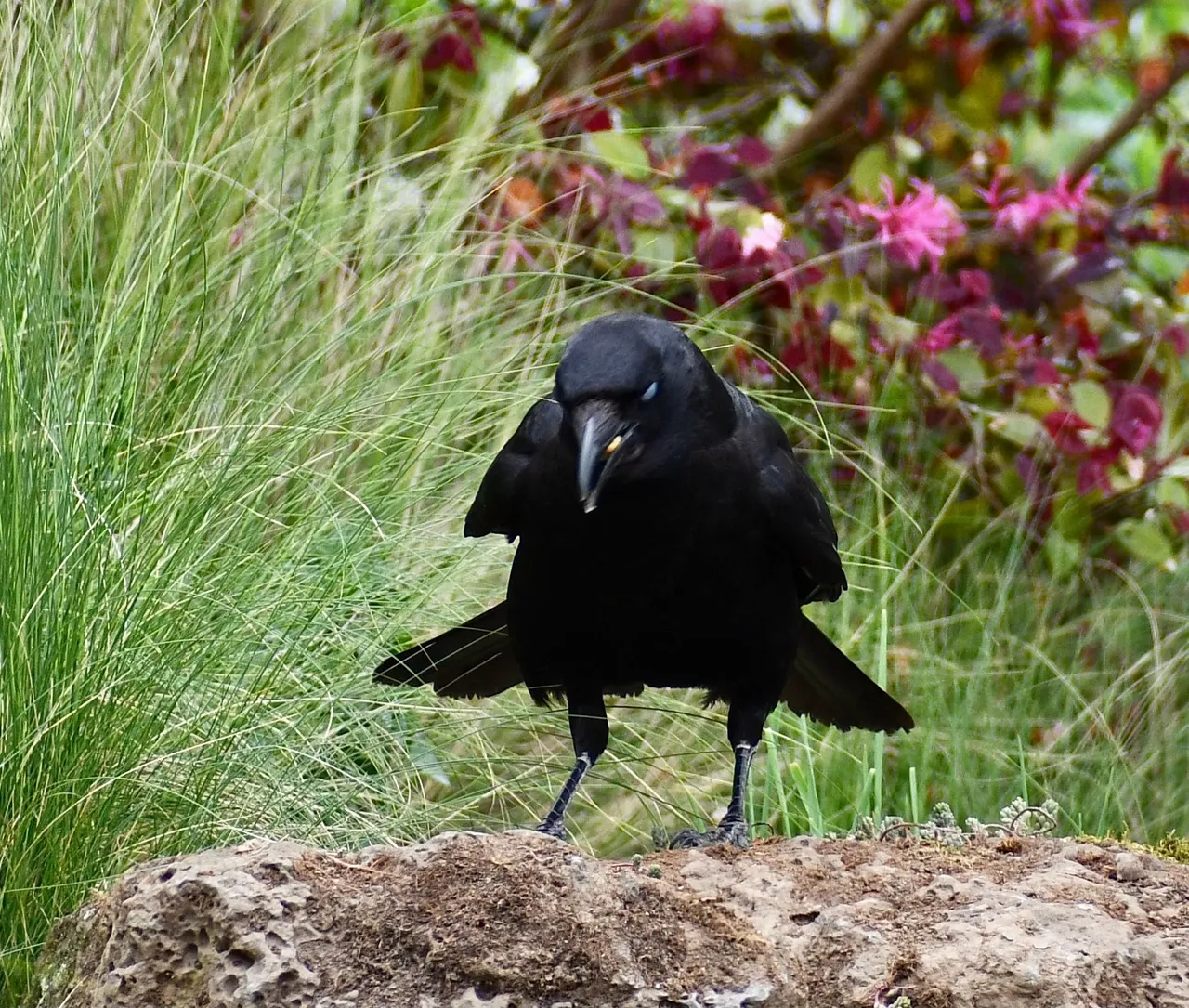
In the world of photography, capturing the crow in mid-blink can make a regular crow look possessed.
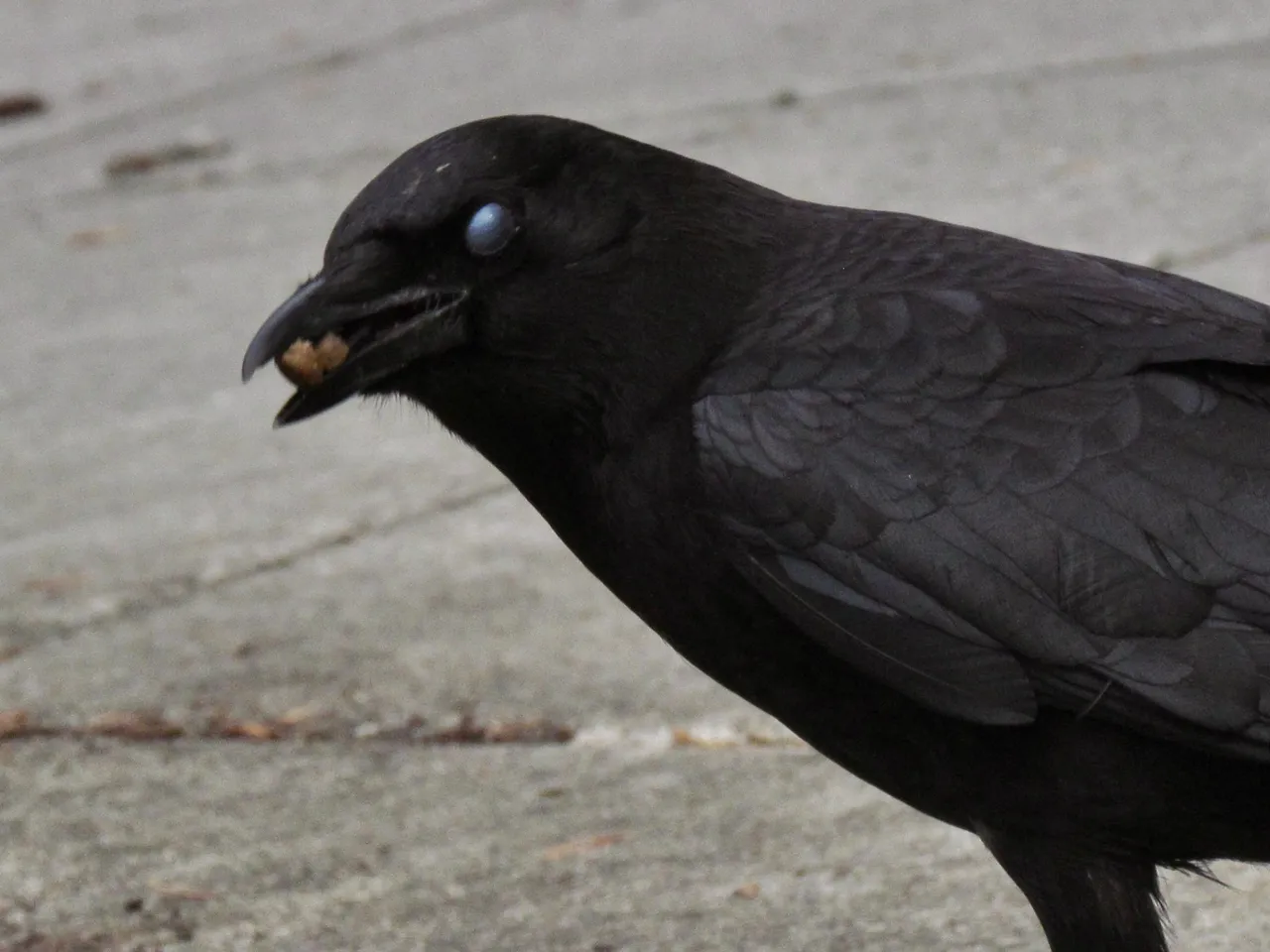
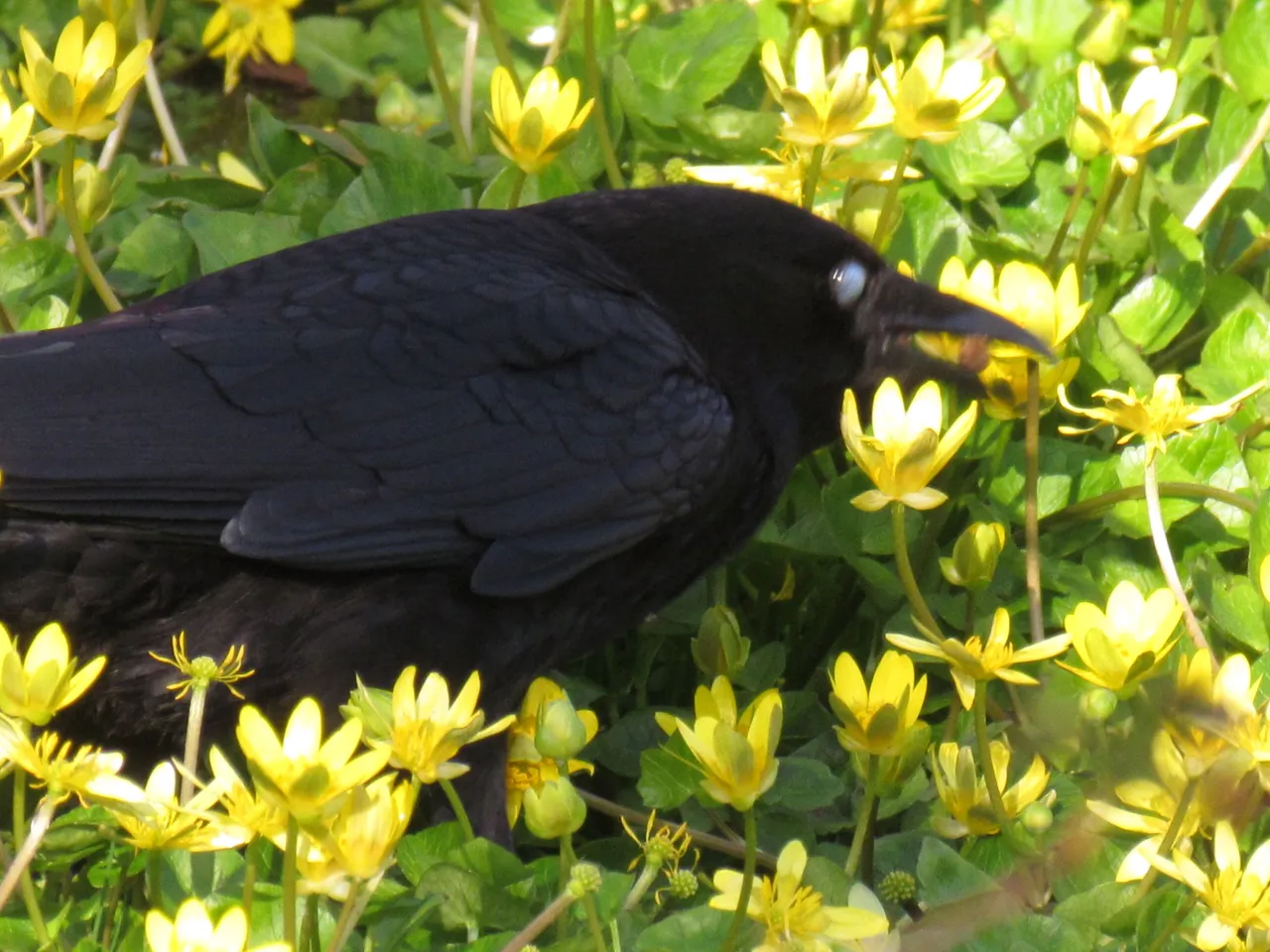
Or blind.
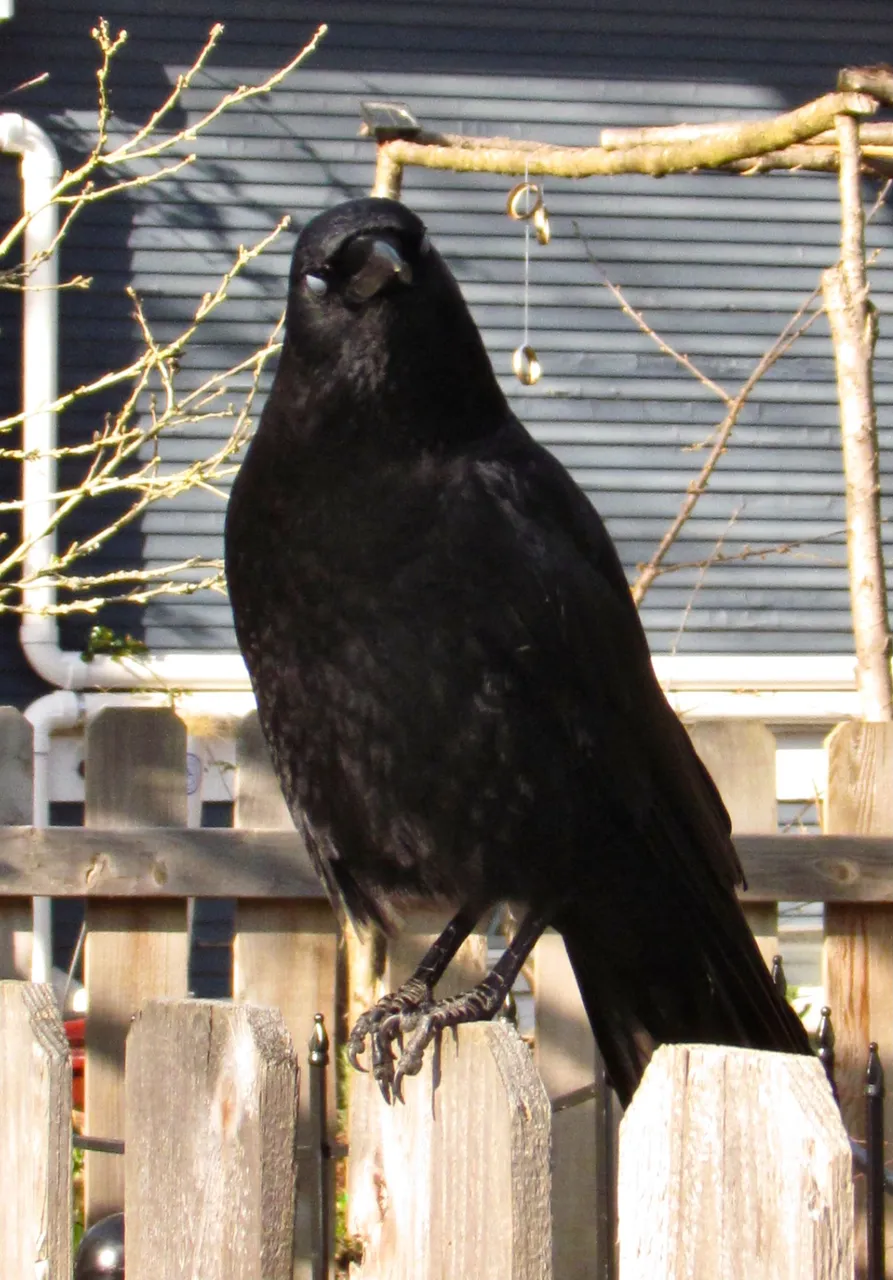
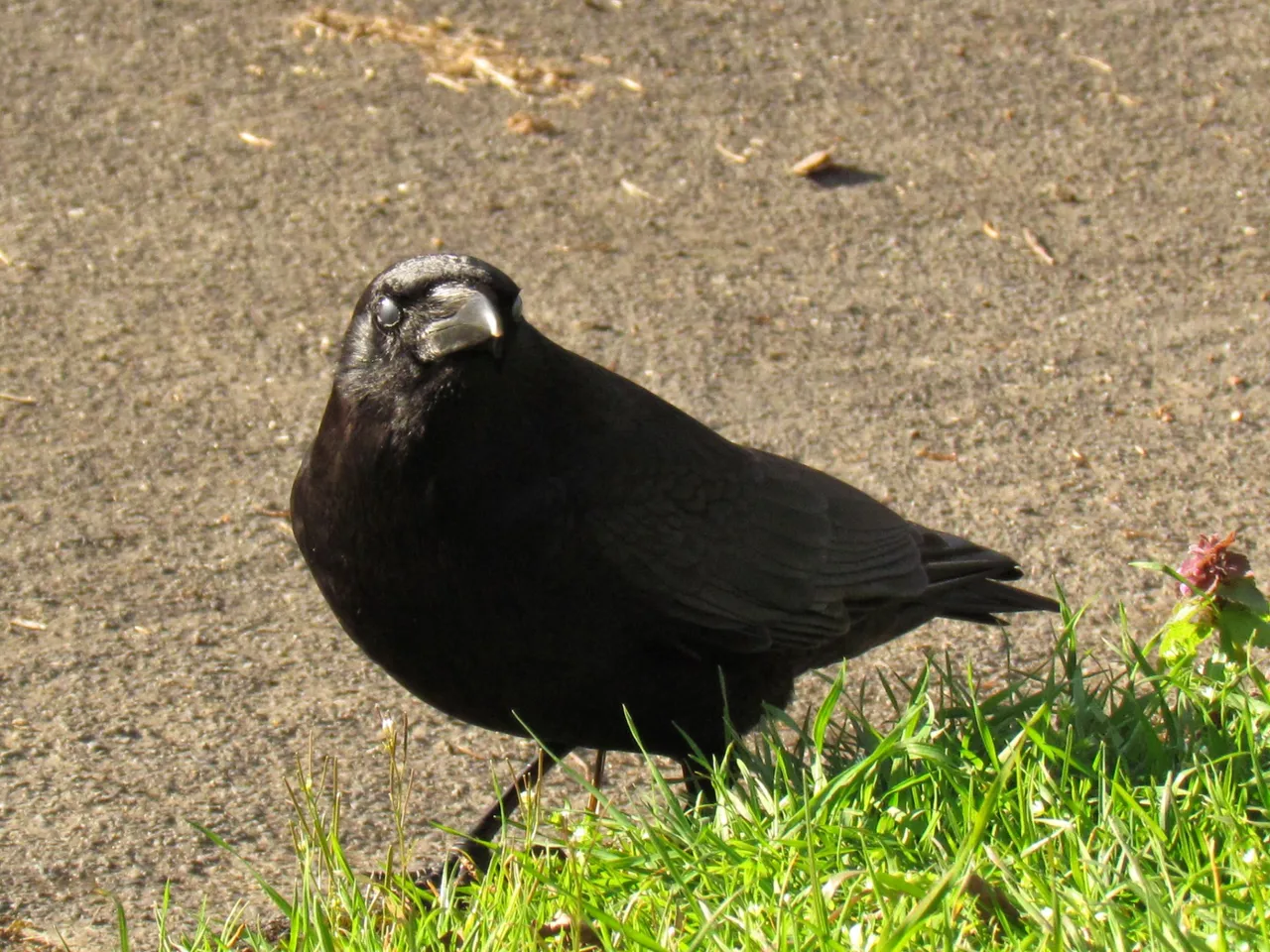
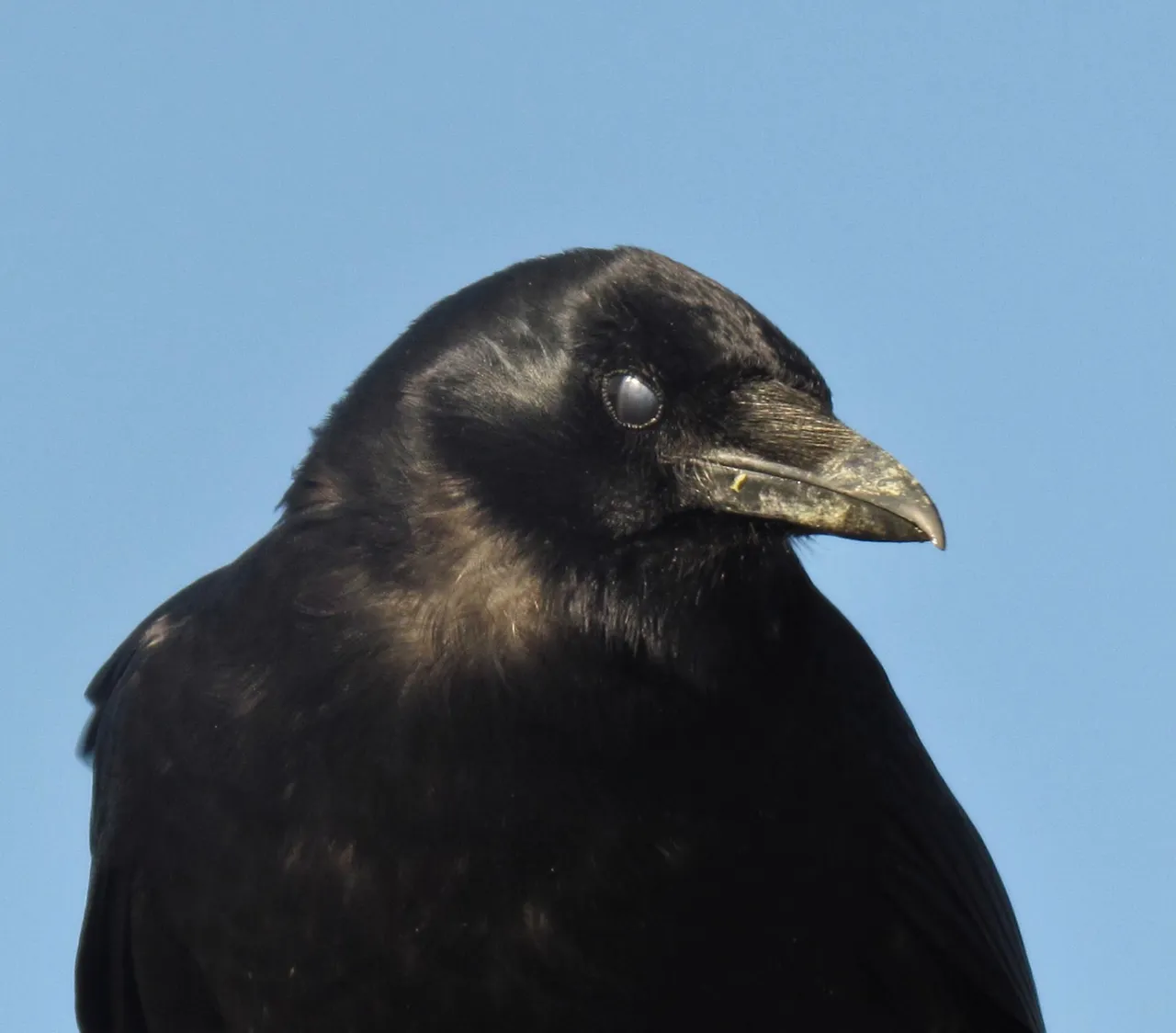
In addition to what I have studied about crows and the nictitating membrane, I have also observed that a comfortable and content crow will blink frequently. I have seen this when spending extended lengths of time with Junior, Lod, and Girlybird, but have mostly captured it in pictures with Bo. I believe this is because the crows feel comfortable and relaxed. Now that they trust me and Pilot, they can be more at ease knowing that most predators and competitors will not approach with a human and a dog in such close proximity.
In Bo's case, though, I think he's just trying to look cute.
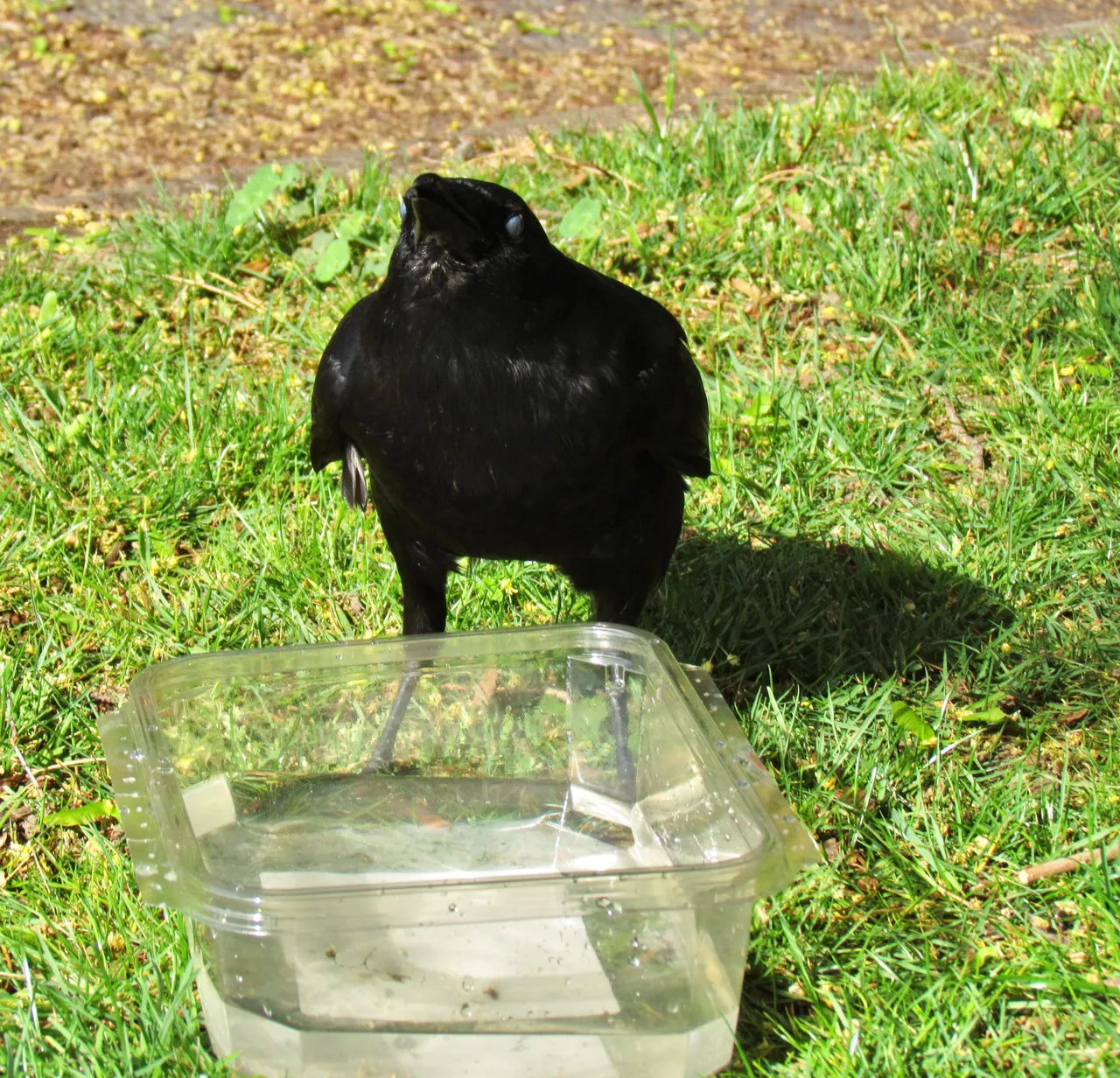
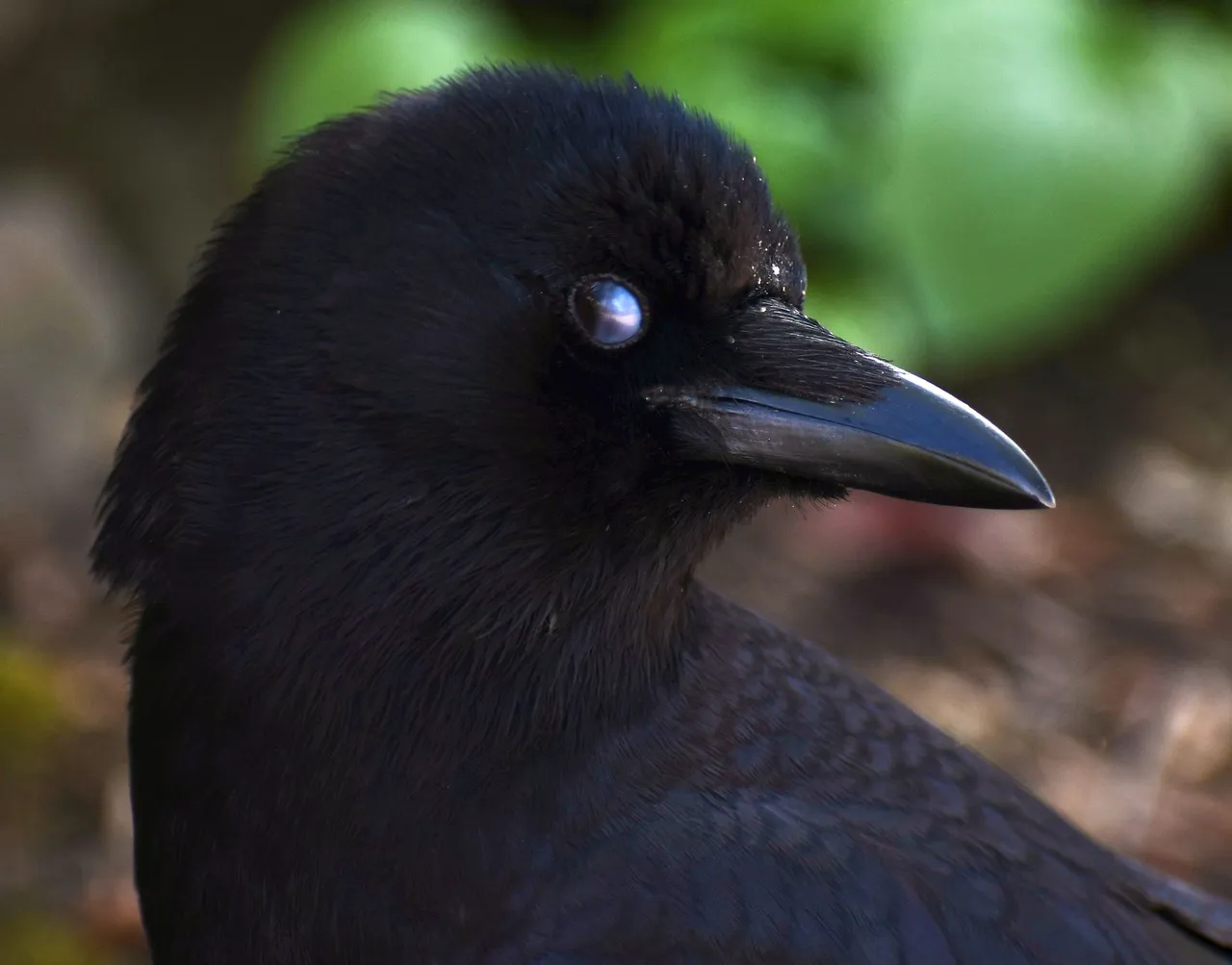

I hope you’ve enjoyed this post! If you’d like to learn more about my friendship with Bo, please read my blog An Unexpected Friendship.
I am passionate about crows and post obsessively about all that I learn from them. If you are interested in learning along with me, please do follow me!
Thanks for reading!
